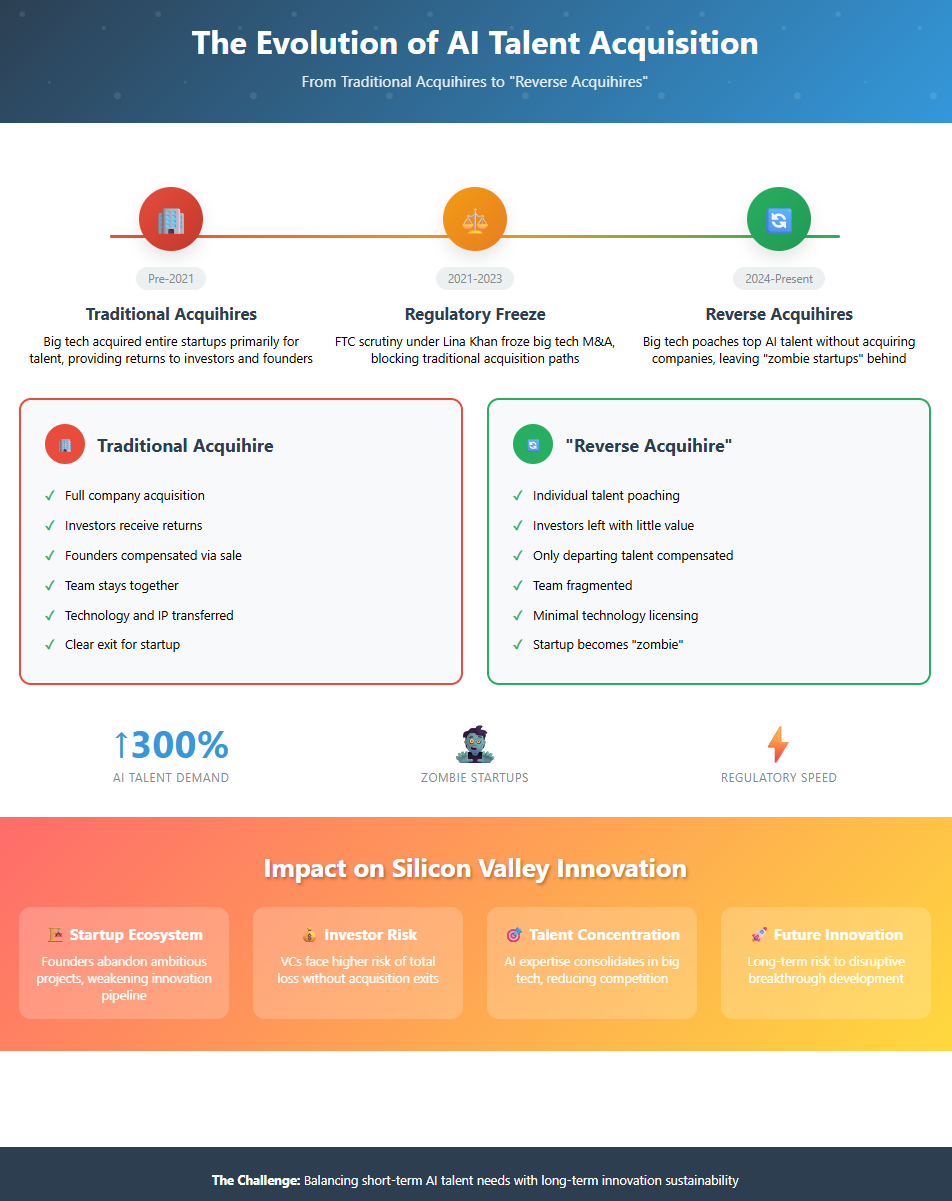What is the Impact for Silicon Valley Innovation?
Acquihires have been a part of Silicon Valley for quite some time now. Larger tech companies come in and acquire startups mainly for their talent, as opposed to their products or technology. However, starting with ex-FTC chair Lina Khan’s subpoenas to big tech companies probing their prior unreported small acquisitions, big tech companies were frozen out of the M&A market since early 2021. As new AI startups were formed, they couldn’t exit and had trouble raising follow-on rounds of capital.
Then, starting with Microsoft’s licensing deal with Inflection AI, we saw a new kind of “acquihire” designed to circumvent the regulatory shutdown. Whereas traditional acquihires resulted in return of capital to startup investors and founders, now there is a new trend taking shape in Silicon Valley. Major players in big tech have begun hiring away top AI talent in what the WSJ has termed the “reverse acquihire.”
These aren’t acquisitions of the startup or the entire team to acquire talent, but rather a poaching of their founders and AI researchers, sometimes packaged with small dollar licensing of the startup’s technology, but which does not result in return of meaningful capital to investors. So, what happens to the remaining business? While this provides big tech with an alternative to bring in the talent they need, it also means that AI leaders and top talent are leaving their companies behind, creating what CNBC calls “zombie startups.”
The driving force behind this on the big tech side is the immediate need for talent, combined with a way to circumvent regulatory hurdles. The WSJ says companies see this stage in AI development as a “once in a generation opportunity,” and that means they need top talent quickly to capitalize on the moment. Additionally, as we have written about previously, acquihires provide an easier route to bring on talent without the regulatory and integration issues of a traditional acquisition. There is also great financial incentive for the founders and researchers being lured away from startups, so it seems like it’s a win-win situation. But, what about the remaining business and the startup’s investors?
In the traditional Silicon Valley startup model, these startups would be looking down a path to a major exit event, but instead, they are losing those driving the company forward. Those who leave are seeing the big payday, but not necessarily those who stay or those who invested. CNBC cites tech investors and startup employees as indicating that this trend “threatens to thwart innovation as founders abandon their ambitious projects to work for the biggest companies in the world.”
Could this significantly impact the traditional startup model for Silicon Valley? If the trend continues, it very well could. Future employees could see startups as too risky, or investors could become more hesitant to put their money into a startup thinking that the founders might leave. And while big tech companies may secure the talent they need today, the long-term cost could be a weakening of the very startup pipeline that has historically driven disruptive breakthroughs.
For founders and researchers, there is the allure of the immediate financial reward, but it also poses a risk to the other employees, investors, and the broader innovation pipeline. Ultimately, it will be important to preserve the independent startup in Silicon Valley and to balance the short-term race for AI talent with the long-term need to sustain entrepreneurial ambition.
How do we incentivize founders to keep building? How do we incentivize venture funds to continue allocating capital to startups? It’s not by looking at one blockbuster IPO from FIGMA and declaring mission accomplished (reference to Lina Khan’s recent case of schadenfreude), but rather, cutting off the regulatory handcuffs put in place by the recently deposed and rearchitecting the capital markets to enable an IPO market. That’s what Silicon Valley really needs…

[View source.]